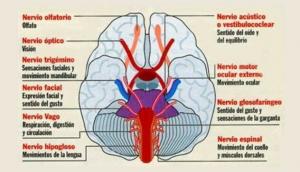Sensory thresholds: what they are and how they define our perception
Human beings, although we are members of the same species and are similar in many ways, we also have great individual differences from each other. Sensory thresholds play a key role in these differences, since they are about the limits that each person has to tolerate a certain stimulus.
In this article we will review what this concept is about and break down its most relevant aspects.
- Related article: "Parts of the Nervous System: functions and anatomical structures"
What are sensory thresholds?
Sensory thresholds refer to the degree to which a subject reacts to a given stimulus, taking into account the intensity necessary to notice it and for it to become annoying, among other parameters.
This is determined through the magnitude that exists between the so-called thresholds, which are made up of minimum thresholds and maximum thresholds. The lower the threshold of a person in terms of a specific stimulus, the lower degree of tolerance they will present to it. The opposite occurs when the tolerance threshold is high; In this case, the subject presents a high tolerance to the stimulus, and may even become hyposensitive to it.
It can then be understood that sensory thresholds are basically the margins of our sensations.
- You may be interested in: "Psychophysics: the beginnings of Psychology"
Its limits
Let's see what happens when a person's thresholds are in one of the limits, whether treat the upper limit (higher tolerance to the stimulus) or the lower limit (lower tolerance to the stimulus).
1. Terminal threshold or upper limit
It refers to the breaking point between tolerance and intolerance. After this point any increase in stimulation has an unbearable effect on the subject., which will inevitably have to give in its resistance.
2. Absolute threshold or lower limit
This consists of the minimum degree of sensation that must exist for the subject to be able to perceive the stimulus. A lower intensity in terms of the level of the stimulus would go unnoticed by the person, since he would not be able to perceive it.
In any of these cases, a series of factors interfere that may be biological or even be related to the social circumstances, the upbringing of the subject, and the environment in which he develops daily.
This supposes that there are no absolute sensation thresholds in any person, that is, these are not permanent, but rather are subject to change depending on the personal circumstances of each individual.
What is the differential threshold?
The differential threshold is the minimum difference in the intensity of a stimulus that must be given to that the subject realizes the difference on one out of every two occasions, that is, 50% of the times.
On the other hand, the differential threshold is greater the greater the magnitude of the stimulus. For example, adding 15 grams to one of two objects that weigh 50 grams can make the difference in weight between them noticeable, but if we add them to one of two objects weighing 5 kilograms, the difference will not be noticeable, since the differential threshold is higher in this second case.
Related theories
These are the main theories of sensory thresholds.
1. psychophysical theory
This theory has focused most of its research in the field of absolute value, the same one that is known as a minimum threshold, leaving aside other relevant aspects of how sensations are perceived by the subject.
2. The modern theory of signal detection
Regarding this theory, there is an important variation compared to the previous one, since the threshold is not taken into account. Emphasis is placed on signal detection, regardless of whether or not the subject is aware that he is receiving a stimulus.
This is achieved through sophisticated measurement instruments, which are specially designed to quantify the intensity of a certain signal that the organism has received, despite the fact that this is imperceptible to the consciousness of the organism. subject.
- You may be interested in: "The 7 types of sensations, and what information they capture"
Methods used for stimulus detection
When researching about this area, the following methods are often used.
1. limits method
It consists of determining, using the approximate calculation, the point that can be closest to the absolute threshold that you want to find.
2. Constant stimuli method
In this case, the subject is subjected to the stimuli randomly. That is, they are not used in an ascending or descending manner. New stimuli are simply being tested constantly, and the results are being recorded.
3. average error method
In this case It must be the evaluator or the evaluated subject himself who manipulates the intensity of the stimuli it receives, until a significant change in sensation occurs.
Bibliographic references:
- Bialek, W. (2012). Biophysics: Searching for Principles. Princeton University Press. p. 40.
- Levine, M. (2000). Fundamentals of Sensation and Perception. London: Oxford University Press.

